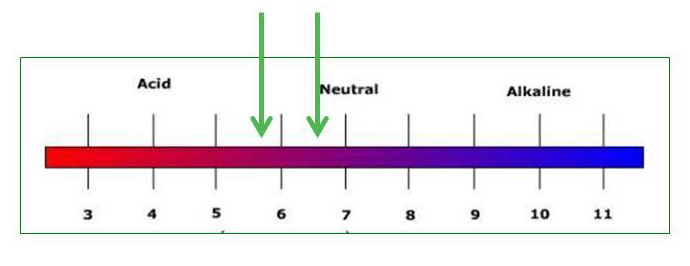It is always good to know if you have sufficient nutrients in the soil and if the soil will allow your vegetable plants to take up those nutrients. This is a simple test and should be performed once every three years if you are aggressively growing vegetables in the home backyard.
There are 16 essential elements needed for quality vegetable production. Three of these nutrients come from water and air: Hydrogen (H), Oxygen (O) and Carbon (C). Thirteen of these nutrients may be supplied by the soil or supplemented by fertilizers:
|
Macronutrients |
Micronutrients |
|
Nitrogen (N) |
Iron (Fe) |
|
Phosphorous (P) |
Manganese (Mn) |
|
Potassium (K) |
Boron (B) |
|
Magnesium (Mg) |
Chlorine (Cl) |
|
Sulfur (S) |
Zinc (Zn) |
|
Calcium (Ca) |
Copper (Cu) |
|
Molybdenum (Mo) |
Should any one of these essential elements be missing, the quality of plant growth could be compromised. Our sandy soils rarely contain all the nutrients needed by a plant, so fertilizers are added on a frequent basis as indicated by the soil nutrition test results.
The UF/IFAS Extension Orange County Plant Clinic cannot test for nutrition in the garden soil sample. However, the Extension Soil Testing Laboratory can test for P, K, Ca, Mg, S, Cu, Mn and Zn. N is very mobile in the soil so it is not tested.
For information about your soil fertilizer requirements, send soil samples to the Extension Soil Testing Laboratory, Wallace Bldg., UF, Gainesville, 32611. Cost of this test is $10.00 and you will be contacted by e-mail in about two – three weeks. Get a copy of the Landscape and Vegetable Garden Test Form at http://edis.ifas.ufl.edu/pdffiles/SS/SS18700.pdf, and follow the instructions on page 2.
Soil samples should be removed from several locations in your garden area at a depth of 6″; mix all samples from that garden area in a bucket and provide a pint of soil for analysis including pH. Do not include debris such as leaves, sticks or large stones in your sample.
One of the most important soil properties that affect the availability of nutrients is soil pH; a measure of the acidity or alkalinity of the soil. Plants have an ideal pH for quality vegetable production. This may be a very wide range or a very narrow range. The pH scale is measured from 0.0 to 14.0. Although it looks linear, it is actually logarithmic, which means a small change can cause a big effect. The center of the scale is called “Neutral” and assigned a measure of 7.0. Any pH measure above 7.0 is considered “alkaline” and any pH measure below 7.0 is considered “acidic.” The best range of pH to grow quality vegetables is a pH measure between 5.8 and 6.5 (slightly acidic). In this range, the nutrients (fertilizers) you put in the ground can be easily taken up by the vegetable plants if there is sufficient water in the soil. If the pH is too high, nutrients are tied up in the soil and they are no longer available to vegetable plants, regardless of the amount of water in the soil. If the pH is too low, micronutrients may reach toxic levels to the vegetable plants. If the soil is too acid, the addition of dolomitic lime will help raise the pH. If the soil is too alkaline, sulfur will help lower the pH if the garden was over limed. The Extension Soil Testing Laboratory will also provide a liming recommendation.
If the pH is too high, nutrients are tied up in the soil and they are no longer available to vegetable plants, regardless of the amount of water in the soil. If the pH is too low, micronutrients may reach toxic levels to the vegetable plants. If the soil is too acid, the addition of dolomitic lime will help raise the pH. If the soil is too alkaline, sulfur will help lower the pH if the garden was over limed. The Extension Soil Testing Laboratory will also provide a liming recommendation.
There are many home remedies often used in the vegetable garden that are wasteful and often cause more harm than good. Do not add Epsom Salts (Magneisum Sulphate) to the vegetable garden unless you have a soil test result that indicates your soil does not have sufficient magnesium to grow vegetables. Otherwise, it is a wasteful practice.
 0
0
